The first part of this guide can be found here.
In Part I of this article we explored Context vs. Skill as it applies to marketing tasks. Tasks requiring higher levels of cultural context and skills are best done closer to home, while tasks with lower levels of context and skill are candidates to automate or move offshore.
This matrix summarizes the model:
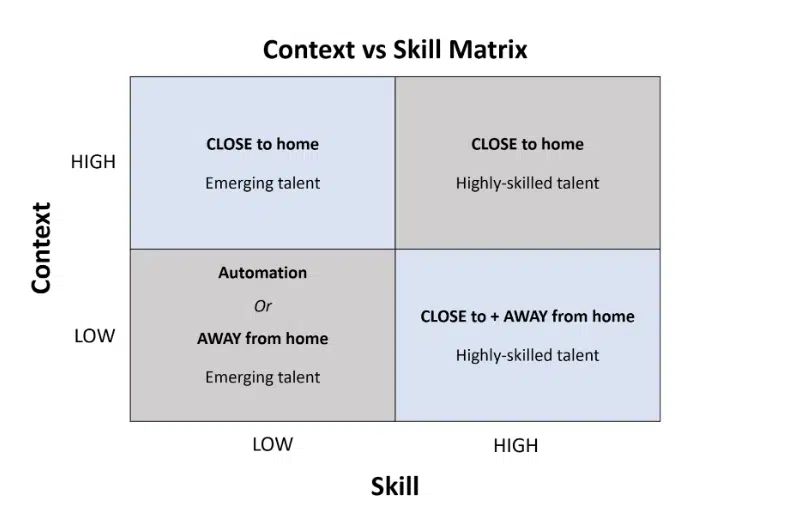
Applying the matrix
While the model is applicable to any aspect of marketing, here’s how it can apply to these areas:
- Design
- Website management
- Marketing automation
- Events
These examples serve as inspiration to consider how Context vs. Skill principles can apply to your marketing delivery; they are not all-inclusive, but represent tasks I’ve seen executed successfully using this framework.
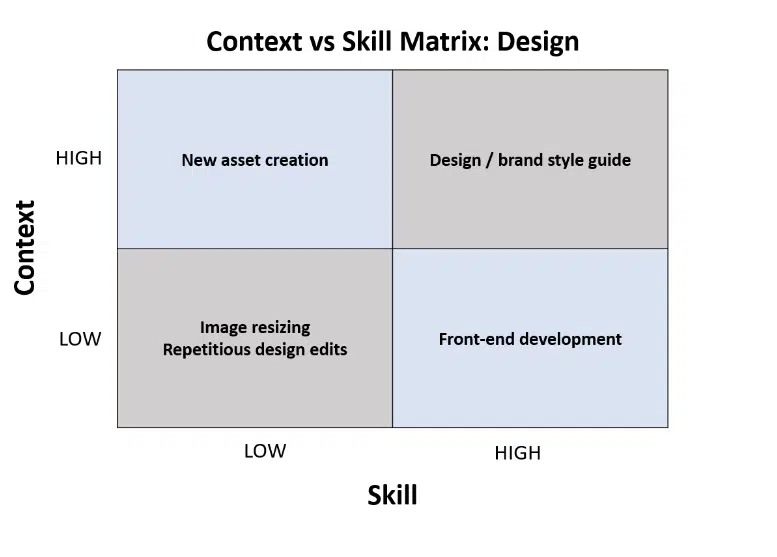
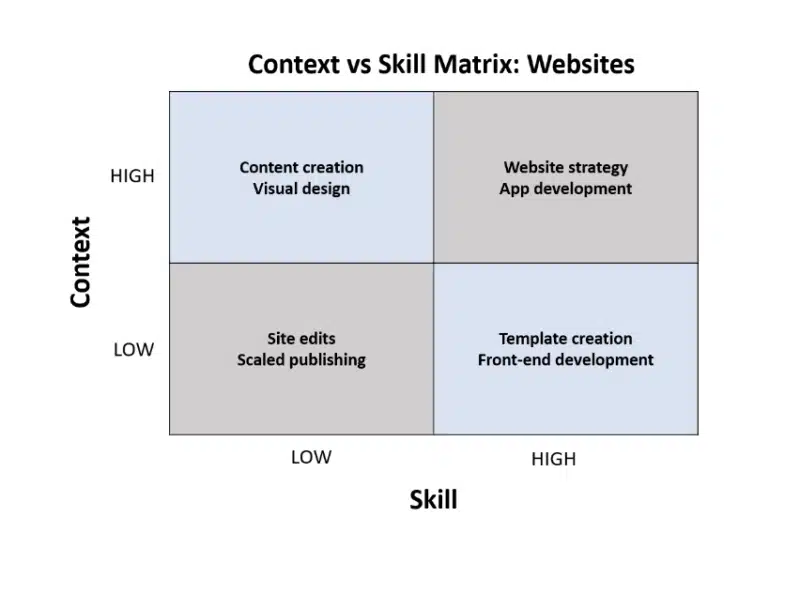
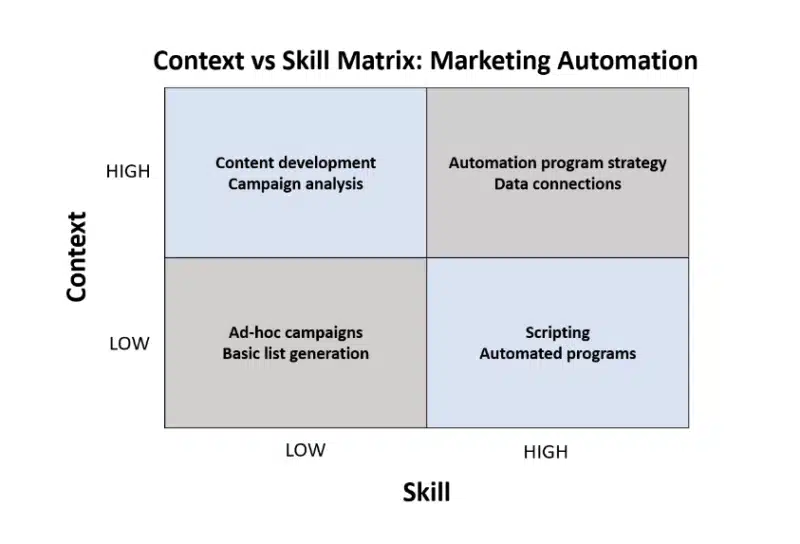
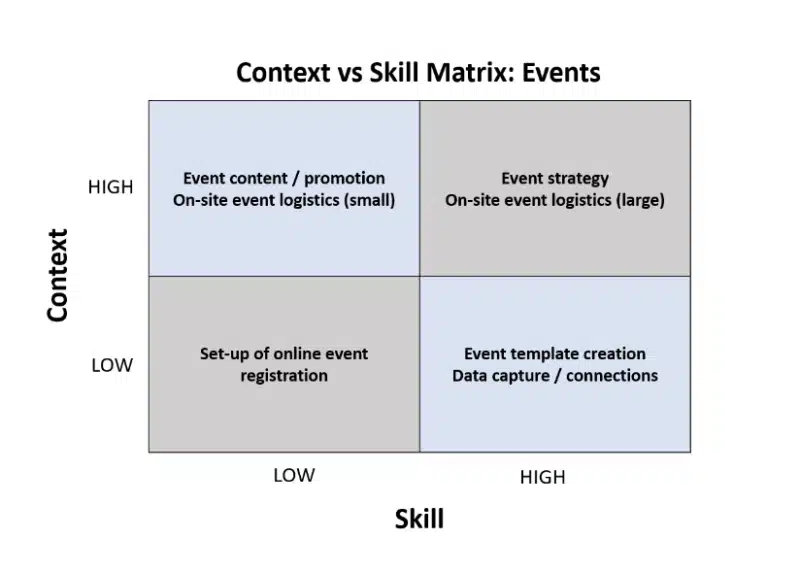
Get MarTech! Daily. Free. In your inbox.
Convincing the naysayers
With an understanding of Core vs. Context principles and these examples, you can apply this framework to your marketing delivery functions and map out options. Ironically, this is the easy part. The hard part is getting others to buy in.
Here are common objections you’re likely to hear.
- “We’re special.” While working as an FTE at Microsoft, I heard this objection on every continent as I worked with local marketers to offshore tasks as part of a centralization strategy. Over time, a clear pattern emerged showing only 20% of the tasks were truly “special” and needed to remain local while 80% of the tasks were common and could be done anywhere regardless of the country. The 80% was low-context work we bundled up and did offshore while local marketing teams kept the higher-context 20% work.
- “You’re displacing local talent.” Almost without exception, removing the lower context work freed up local marketers to pursue higher context, more value-added activities. A more canny tactic would be advocating to get in front of the disruptive trends of automation and offshore that are likely inevitable in today’s modern workplace.
- “It will be slower.” An amazing array of powerful project management tools (Asana, JIRA, Workfront, Monday.com, Trello, Wrike, etc.) and collaboration tools (Slack, Zoom, Microsoft Teams, etc.) digitize the marketing supply chain and effectively unite workers under a single, virtual roof. While we may take comfort in knowing a team member is down the hall, it’s just that — comfort. The virtual version of “down the hall” has proven effective.
- “You can only offshore simple tasks.” While low-skilled, low-context work is the easiest to offshore, highly-skilled work is viable with the right approach. Having a resource on-shore who deeply understands context can work with marketing stakeholders to gather and synthesize requirements, translating them for offshore teams. With a disciplined approach to defining and documenting, those teams can do amazing lower-context, highly-skilled work.
- “Offshore is only for big companies.” I’ve seen a company with less than 10 people successfully leverage an offshore team to supplement their work. There are professional services firms with attractive rates, robust services, and track records of success ready to help you in your offshore journey.
Dig deeper: Driving marketing at scale: Moving from a decentralized to centralized model
Offshore isn’t a silver bullet and should be carefully considered. But the principles of Context vs. Skill are tried and true, are bigger than marketing, and can be applied to any discipline. Objections may arise, but the case for thoughtfully sourcing talent from diverse markets is worth consideration.
Done some offshore of your own? Have feedback on this model? I’d love to trade notes. Reach out to me on LinkedIn and tell me what’s worked for you.
Dig deeper: How work management tools are connecting marketing teams and processes
Opinions expressed in this article are those of the guest author and not necessarily MarTech. Staff authors are listed here.
























































![Social Media Spring Cleaning [Infographic] Social Media Spring Cleaning [Infographic]](https://imgproxy.divecdn.com/9e7sW3TubFHM00yvXe5zvvbhAVriJiGqS8xmVFLPC6s/g:ce/rs:fit:770:435/Z3M6Ly9kaXZlc2l0ZS1zdG9yYWdlL2RpdmVpbWFnZS9zb2NpYWxfc3ByaW5nX2NsZWFuaW5nMi5wbmc=.webp)
![5 Ways to Improve Your LinkedIn Marketing Efforts in 2025 [Infographic] 5 Ways to Improve Your LinkedIn Marketing Efforts in 2025 [Infographic]](https://imgproxy.divecdn.com/Hv-m77iIkXSAtB3IEwA3XAuouMwkZApIeDGDnLy5Yhs/g:ce/rs:fit:770:435/Z3M6Ly9kaXZlc2l0ZS1zdG9yYWdlL2RpdmVpbWFnZS9saW5rZWRpbl9zdHJhdGVneV9pbmZvMi5wbmc=.webp)














